What you do following a workout is just as important as the workout itself. A majority of people tend to neglect their cool down exercises due to time constraints, lack of equipment, or simply because they don’t want to. I personally always include in my workout plan both a cool down routine as well as a stretch routine.
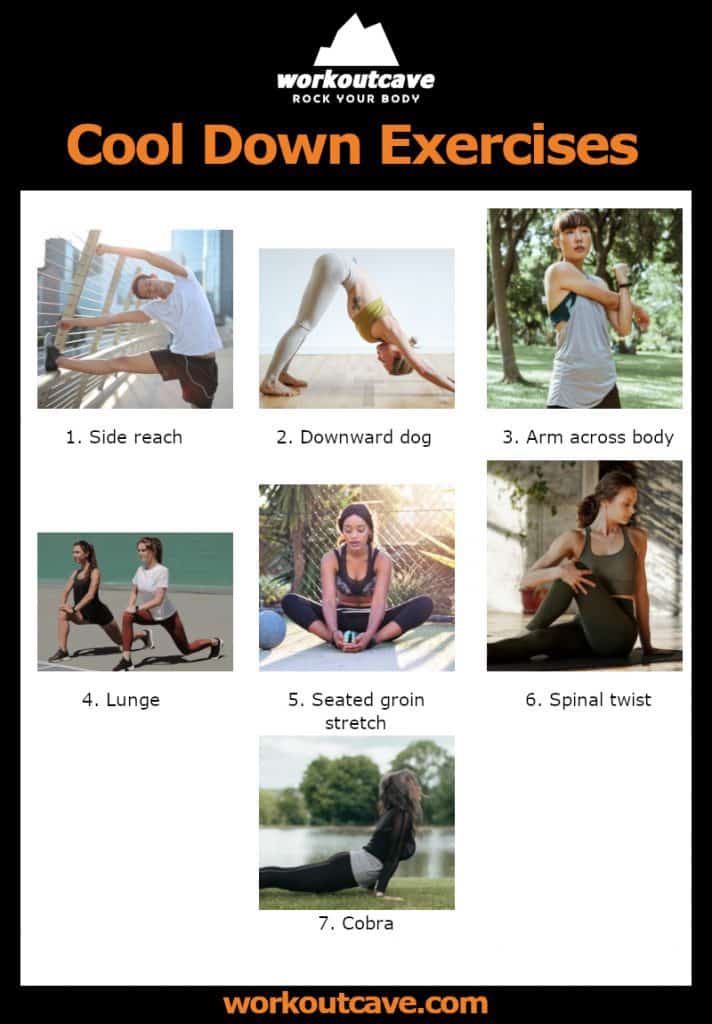
The process of cooling your body down from a bout of exercise allows for a gradual recovery of your heart, lungs, and muscles. This is especially important following an intense bout of exercise to comfortably bring your body back down to a resting state.
Benefits of a Proper Cool Down
Incorporating cool down exercises after a workout is essential to your health and fitness. A workout, regardless of how intense it is, will shift your body into a state of stress. Giving yourself the time to adequately cool down can shift your body and mind into a more calm and restful state.
Currently most of the elliptical machine manufactures understand importance of the cool down, hence most types of treadmills and many types of rowing machines will come with preprogrammed feature of cool down. I will always make sure I use these when I happened to be in the gym or when I’m doing some home cardio exercises. For example I will do a cardio session on a spin bike and then cooldown session on recumbent bike.
Physical Benefits
A proper cool-down routine has various cardiovascular benefits. It is one of the best wat to start recovery after workout of your pre-exercise heart rate, blood pressure, and body temperature. Also, the recovery of your breathing rate can help you avoid feelings of dizziness or nausea.
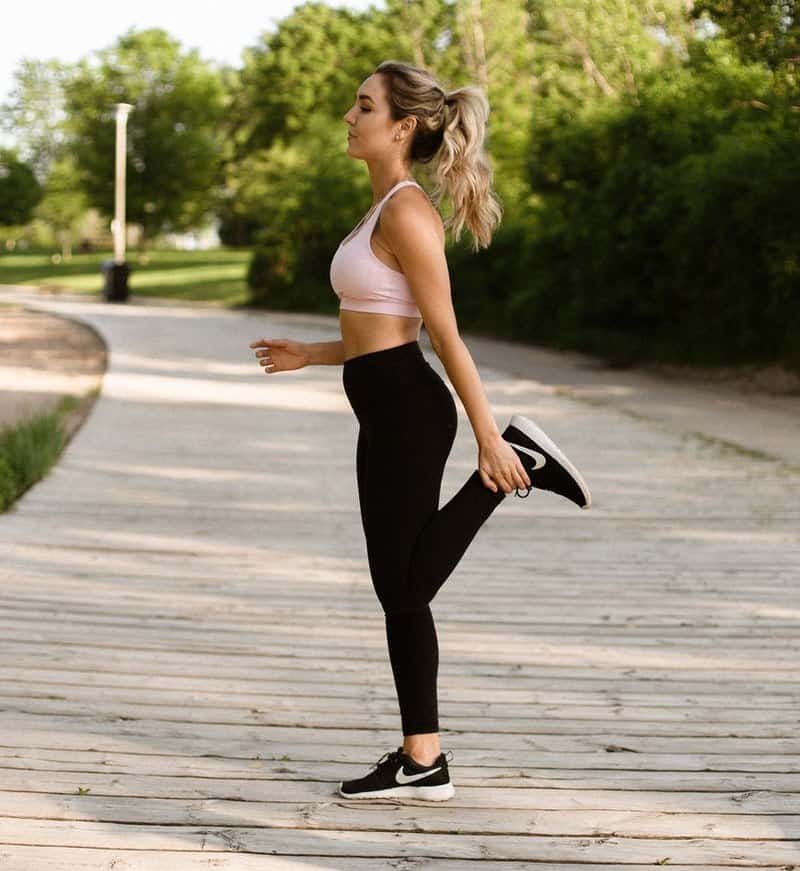
Along with these vital cardiovascular benefits, a post-workout cool-down is also beneficial for your muscles and joints. Slow and controlled movements help minimize lactic acid buildup in your muscles which reduces soreness.
Lactic acid is a byproduct of exercise that works to cause muscle pain and fatigue. Naturally, your liver will break it down over time; however, cool-down exercises are shown to improve the rate of this break down, allowing you to get back to your next workout sooner and more comfortably.
Psychological Benefits
Aside from the common physical benefits, there are also numerous psychological benefits involved. A cool down improves your mental health through endorphin release. This helps in the following ways:
- improving mood and levels of happiness
- reducing levels of stress and anxiety
- elevating levels of workout motivation
The Top Techniques for a Proper Cool Down
There are various modalities to help you cool down your body and mind following an intensive workout. No matter your fitness plans are, we’ve got you covered on a proper cool down routine.
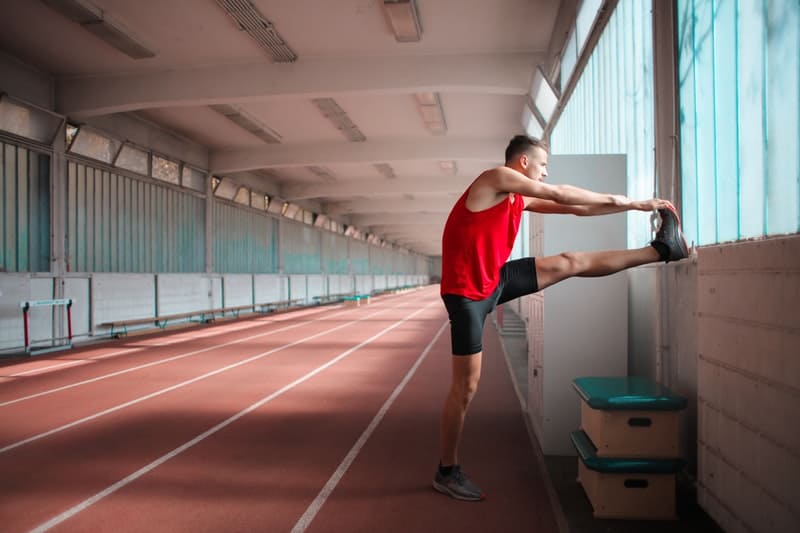
Here are some of the top methods to gradually recover to a pre-exercise status.
Static Stretching
Static stretching helps you improve your mobility by lengthening your muscle and holding it into position for 15-20 seconds. This type of stretching is more beneficial when accomplished after your cardiovascular or strength training exercises.
Head tilt
From a standing position, reach your right arm over your head and place the palm of your hand on the left side of your head. Pull your head towards your right shoulder and allow your neck to flex in that direction. Hold for 15-20 seconds and switch to the other side.
Side reach
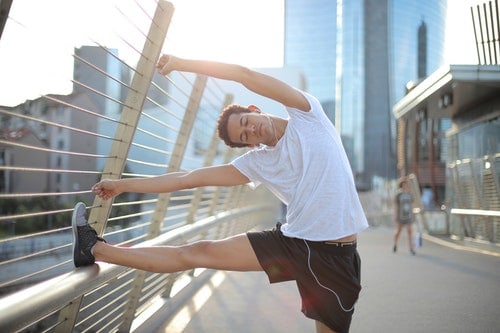
From a standing position, extend your right arm over your head and place your left arm on your left hip. Stretch your right arm towards the right side of the room allowing your torso to bend with it. Hold for 15-20 seconds and switch to the other side.
Arm across body

From a standing position, extend your right arm in front of your body. Place your left hand on your right arm and pull it into your body. You should feel this stretch on your shoulder and back of the arm. Hold for 15-20 seconds and switch to the other side.
Lunge
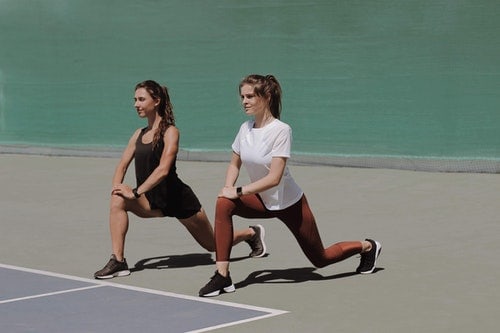
From a standing position, step forward with your right leg and bend into a forward lunge position. Keep your bent knee behind your foot and hold your chest up high. Lower your hips down into a full lunge position and hold. Hold for 15-20 seconds and switch to the other side.
Seated groin stretch
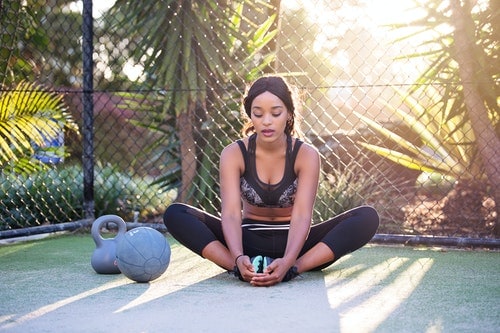
From a seated position, bend both of your legs and bring your feet together so the bottoms of your feet are touching one another in front of your body. Keep your chest raised and pull your heels towards your body to feel a deeper stretch. Hold for 15-20 seconds.
Side-lying knee bend
From a seated position, lay down on your back and turn onto the left side of your body. Bend your right leg back towards your glutes and grab onto that ankle with your right hand. Use your left arm to support your head as your stretch. Hold for 15-20 seconds and switch to the other side.
Spinal twist
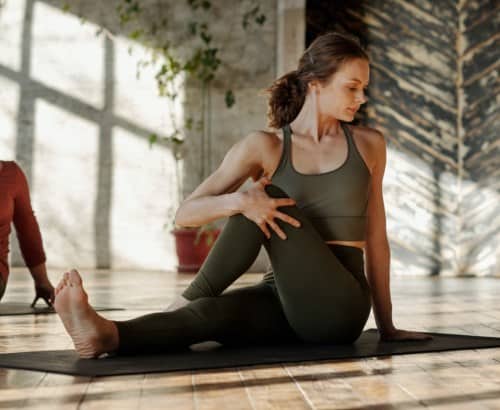
From a seated position, lay down onto your back and spread your arms out wide, making a T shape with your body. Plant both feet onto the floor in a bent leg position, and drop them to the right. Face your head in the opposite direction as your knees. Hold for 15-20 seconds and switch to the other side.
Seated figure 4
From a seated position, lay down onto your back and plant both feet onto the ground in a bent-knee position. Cross your left leg over your right by placing your left ankle on top of your right thigh (in figure 4). With both arms, pull your right leg towards your body and hold. Hold for 15-20 seconds and switch to the other side.
Downward dog
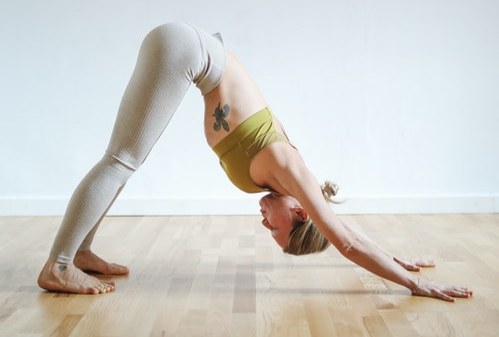
Begin this stretch by laying down on your stomach. With both hands pressed onto the ground just below your shoulders, push your body off the ground into a high plank position. Bend your upper body towards your feet by lifting your glutes high into the air. Hold for 15-20 seconds.
Cobra
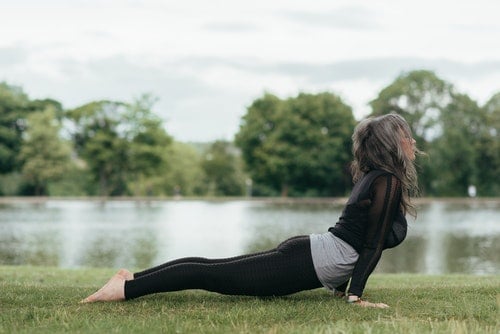
Begin by laying down onto your stomach with both hands on the floor next to your chest. Push down with your hands until your arms extend fully. Keep your lower body onto the ground and raise your chest and head only. Hold for 15-20 seconds.
Reminder: breathing deeply throughout your stretches helps to move oxygen to your muscles, release tension in your body, and promote further relaxation.
Cardiovascular Cool Down
Following a bout of cardio, your cool down will look very similar to your initial warm up routine. The primary purpose of this is to recover your heart rate back to (or slightly higher than) its resting state.
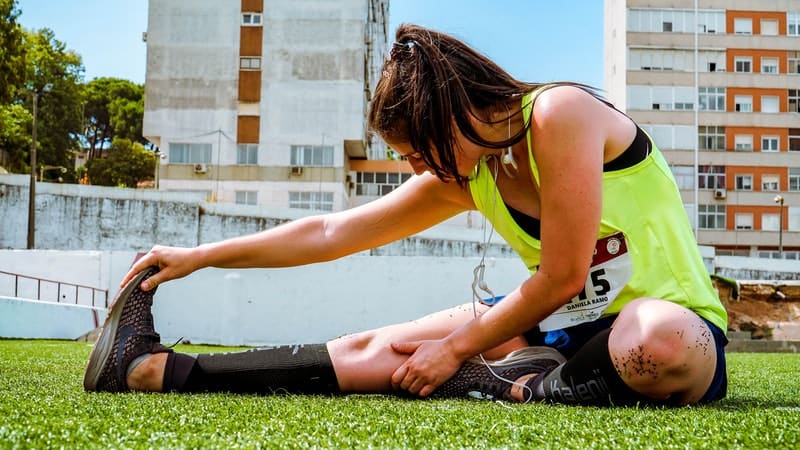
You generally want to spend 5-10 minutes cooling down your body using the same device you used during the activity. For example, if you just completed a spin class, you want to spend 5-10 minutes cooling down on the bike at a slower pace and reduced intensity.
Some cool down options include:
- Walking or jogging lightly
- Biking
- Elliptical
- Rowing
Foam Rolling
Foam rolling has grown in popularity as an intervention to relieve muscle tension and soreness, as well as improving flexibility. Research has found that it plays a role in both exercise/sports performance and recovery.
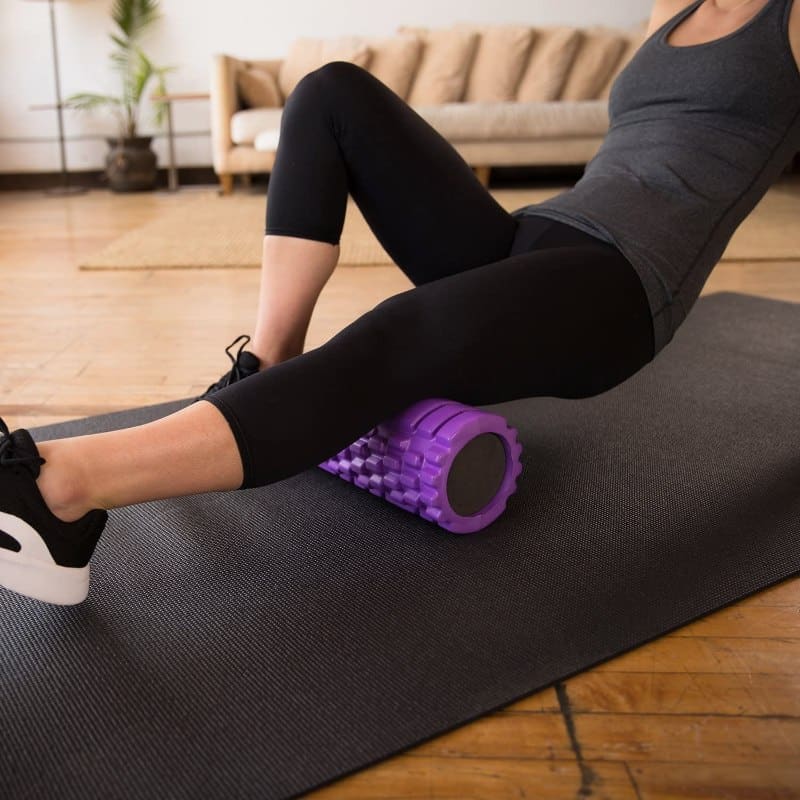
Depending on your training goals, foam rolling can be an effective intervention during warm-up and cool-down. Similar to a sports massage, performing foam rolling as a cool-down can help locate sore areas to release tension in the fascia that surrounds the muscle.
The general guideline is to foam roll for 20-30 seconds per muscle group.

Over to You
You have a lot of different options to cool down your body and mind following a workout. Completing a proper cool down is advantageous to your cardiovascular system, joints and muscles, as well as your mindset! Incorporating a proper cool down can help you with your training progression, whether it is to achieve that first muscle up your pull up progression or crack that first one hand push up in your pushup progression, it is a great addition to your bodyweight workout.
I have recently started doing Stand-up Paddle Boarding and this stretch routine is a great cooldown after a session.
You can even mix and match some of the cool down modalities, such as targeting certain muscles with static stretches then moving onto some foam rolling. What are your favourite cool-down exercises?
